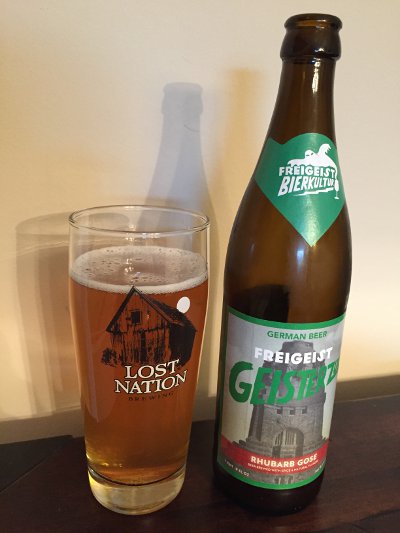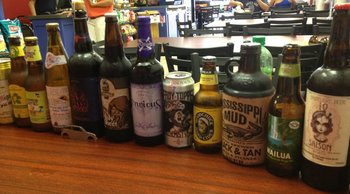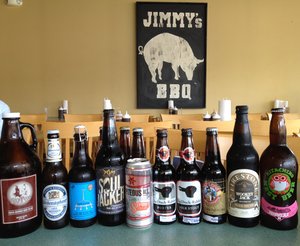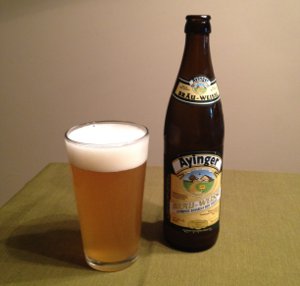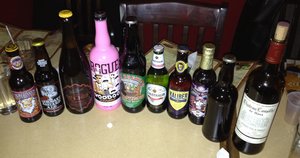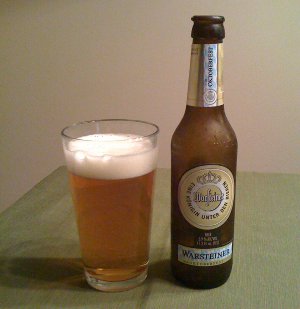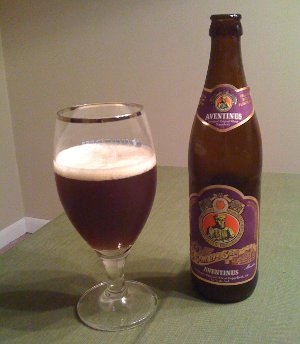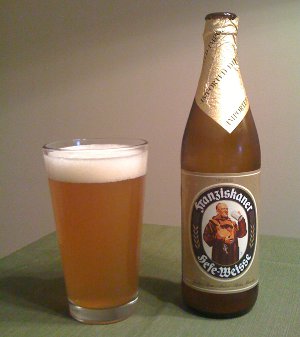In the interest of continuing to cobble together a functional relationship with lagers, I’ve resolved to write more about them. This would be a natural progression from actually drinking a lot more of them over the past few years, but I’ve also noticed that writing about lagers can be a bit tricky.
I mean, sure, I’ve drank a ton of Oktoberfest beers over the past few years (and indeed, they’ve been a key driver of my more lager-focused beer portfolio of late), but do you really need me to delve into esoteric topics like decoction mashes, the melanoidins that form via a Maillard reaction resulting from taking a portion of the mash, boiling it, and returning to the mash to raise the temperature and increase starch extraction? Probably not, but then there’s the whole historical component, in which this whole shebang started because thermometers hadn’t been invented yet and brewers used this as a way to reliably increase temperatures while mashing in, which almost accidentally resulted in a distinct flavor profile that is quite lovely. This is, um, equally esoteric I guess, but mildy more interesting.
I suppose there is a whole purist’s debate at this point, which is a reliable source of controversy. It’s still hard to get that worked up about the folks who are like, yes, decoction mashing is great, but we have thermometers and other state of the art equipment now and can achieve a step mash perfectly fine without adding 4 hours to the brewing process thankyouverymuch. To be sure, as a trusted blogging source, I should be researching each of these brews and ruthlessly shaming those who don’t do a decoction mash. “But I do do a decoction mash!” you (a brewer) say? First of all, you just said “do do” which is pretty funny, but what I really want to know is if it’s a triple decoction mash? No? I’m very disappointed in you.
Oh, I guess the other thing that’s worth mentioning about the hallowed Oktoberfest is that it can kinda, sorta divided up into two families: Märzen and Festbier. Märzen originated as a beer brewed in March because it was illegal to brew in the summer months and they needed to ensure that the beer would last until Oktoberfest. It tends to be a bit darker and stronger than the Festbier, which is a more modern take that is a less heavy take on the style and thus more suitable for pounding a few liters of during the festival. There’s certainly a distinction there, but I suspect a lot of breweries play it a little fast and loose with the terms.
Hmm, so for someone who whines about not having much to write about, I’ve just spent several babbling paragraphs barely scraping the surface of the subtleties that lie beneath the Oktoberfest style, haven’t I? Well, let’s actually take a look at some of the more prominent examples I took on this past Oktoberfest season:
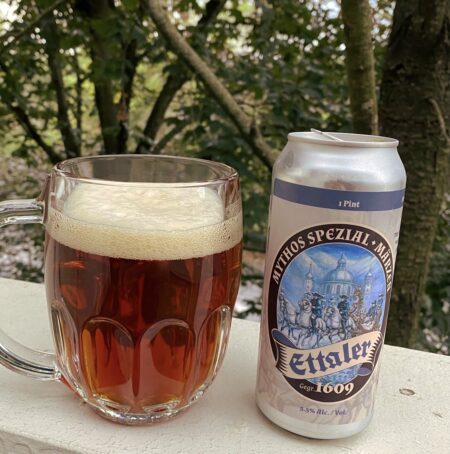
Ettal Mythos Bayern Kloster Spezial – Obviously, I needed to include an actual German brewery in this roundup, and while some of the more famous and widely distributed examples are great, this one rivals just about any Oktoberfest I’ve ever had. I actually only discovered it a few years ago and supplies appear limited, but it’s worth snagging some of this if you ever see it. Truly great Märzen style Oktoberfest, gorgeous amber orange color, great toasty character, caramelized Munich malt, medium bodied but quaffable, well balanced, just fantastic stuff. A
Beer Nerd Details: 5.5% ABV canned (16 ounce pounder). Drank out of a mug on 8/7/21.
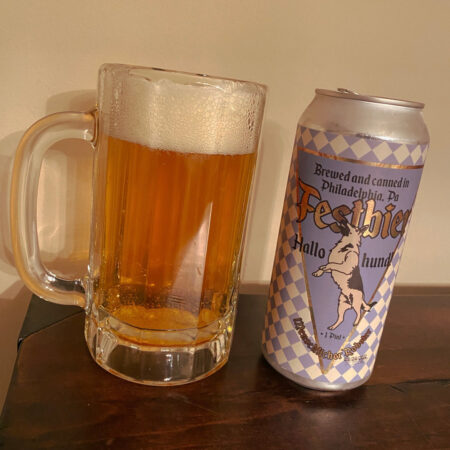
Human Robot Festbier – Local lager maestros at Human Robot have put out a couple different takes on the style; this one obviously leans more towards the lighter Festbier type, but it’s a rock solid version of that. Would love to try their take on a Märzen, but this one hit the spot for sure. Pours a clear, pale, golden color with a couple fingers of fluffy, big bubbled head that nonetheless has good retention. Smells bready, biscuity, a hint of toast in the background. Taste starts sweet, hits that lightly toasted malt backbone, finishing with a bit of a balancing bitterness. Mouthfeel is light bodied, crisp, and quaffable. Overall, rock solid Festbier here. B+
Beer Nerd Details: 5.6% ABV canned (16 ounce pounder). Drank out of a mug on 9/3/22.
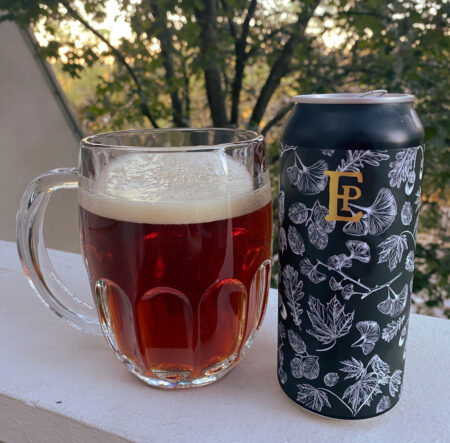
Elder Pine Autumn Awaits – Like their Choice Pivo Pils, this is a traditional Märzen style Oktoberfest that’s been been lagered in an American Oak Foeder for 3 months, a nice spin on the standard takes. Pours a coppery amber color with a finger of off white head. Smells nice, toasted malt, a hint of noble hops. Taste hits those toasty notes up front, a little light caramel sweetness, earthy, spicy noble hops pitching in towards the finish. Mouthfeel is medium bodied, crisp, and well carbonated, very easy going stuff. I don’t really get much oak, but I think it does lend something to the overall complexity and balance. Overall, it’s a pretty fantastic little Märzen, worth seeking out. A-
Beer Nerd Details: 6% ABV canned (16 ounce pounder). Drank out of a mug on 9/24/22. Canned on 08/15/22.
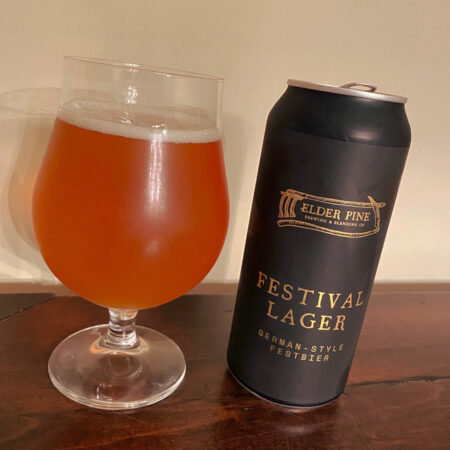
Elder Pine Festival Lager – Elder Pine’s take on Festbier with an American twist: the use of Lemondrop hops adds a hint of citrus to the more standard proceedings. Pours a paler golden orange color with a finger of white head. Smells a little more hop forward than Autumn Awaits, a hint of citrus, but the toasty malt is still there (i.e. this isn’t some insane, over-the-top American citrus hop bomb, it’s a subtle difference). Similarly, the flavor is more hop forward but the toasty notes are quite prominent, moreso than a lot of festbiers. Mouthfeel is medium bodied, crisp and highly carbonated, perhaps a hint easier going than Autumn Awaits, and it’s almost dry (perhaps a hint too much so, but that doesn’t sink the beer or anything). Overall, I tend to prefer Marzens over Festbiers, but this is a decent enough example of the latter and it makes for a nice comparison with the aforementioned Autumn Awaits. B
Beer Nerd Details: 5.5% ABV canned (16 ounce pounder). Drank out of a tulip glass on 9/25/22. Canned on 08/08/22.
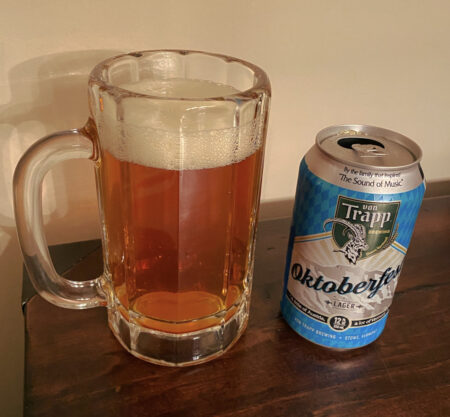
von Trapp Oktoberfest – The hills are alive with the sound of lager, and the von Trapp folks have naturally produced a straightforward but excellent example of the Märzen (even if it appears a bit paler than I’d expect). Pours a golden orange color with a finger of white head. Smells sweet, some light caramel notes, toast. Taste also hits that sweet note, light caramel, toasted malt, balanced hop character. Mouthfeel is medium bodied, well carbed, but still quaffable. Overall, pretty fantastic example of the style, as is typical from von Trapp. A-
Beer Nerd Details: 5.6% ABV canned (12 ounce). Drank out of a mug on 10/1/22.
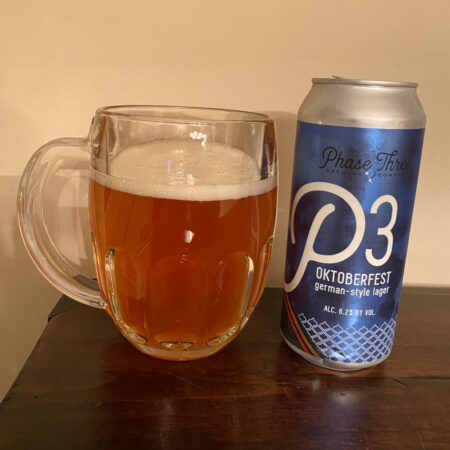
Phase 3 P3 Oktoberfest – Pours… a golden orange color with a finger of white head. Yes, this is getting repetitive. Smells sweet, bready, biscuits, a bit of toast. Taste follows the nose, a bit of light caramel showing up here, but still heavy on the biscuity toast. Mouthfeel is medium bodied, well carbed, dryer than the other examples here, and still quaffable. Straightforward stuff. B+
Beer Nerd Details: 6.2% ABV canned (16 ounce pounder). Drank out of a mug on 10/23/22.
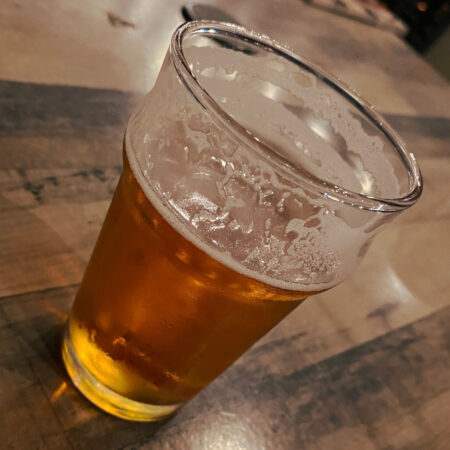
Locust Lane Oktoberfest – A local brewery that sourced ingredients from local Deer Creek Malthouse for this take. It’s listed as a Märzen but feels more like a festbier. Pale, with pretty standard Oktoberfest character, a little flabby, maybe my least favorite from this post, but I might have just been disappointed because their Farmhouse Pils was pretty damn good so I was getting my hopes up. B-
Beer Nerd Details: 5.5% ABV on tap. Drank out of a nonic pint glass on 10/26/22.
A hearty no-thank-you goes out to Sierra Nevada, whose annual spins on Oktoberfest beers were always a highlight of the season… until this year, when they scaled back dramatically in favor of a seasonal hazy IPA or some such. I love their standard take on the style, but they did a few years of collaborations with German breweries that were all pretty fantastic (and distinct). I hope they get back to that next year.
Remember when I said I’d get this post out in October? Lol, I’m the worst. I’ve a few reviews in the hopper, so mayhap we can get back to posting more than once a month sometime soon.
